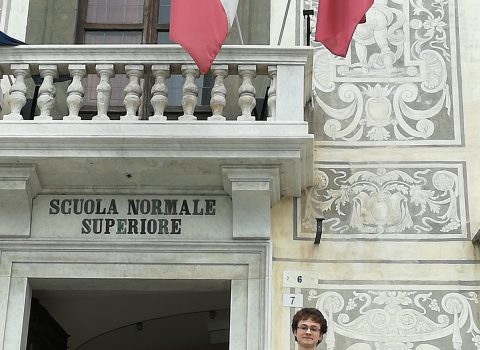
New allies in the fight against mafia organizations. Analytical methods and machine learning in support of justice.
Many milestones have been achieved in the field of anti-mafia legislation, from the Rognoni-La Torre Act (1982), which punishes mafia-structured organized crime by defining its peculiarities and differences from ordinary criminal association, up to Act 109/96, which mandates the public and social reuse of property confiscated from mafias. And, in addition to these, the establishment of specialized bodies such as the National Anti-Mafia and Anti-Terrorism Directorate (DNAA) and the UN Palermo Convention (2000), the world's first legislative instrument against transnational organized crime. More recent, though, is the development of some less traditional tools that aim to apply analytical methods and machine learning techniques to the investigation phase.
There are fiefdoms to defend and peasants to blackmail. There are large landowners and traders who know who they have to report to. And then there are politicians looking for votes, infrastructure to be completed and houses to be built. This is the newly formed Kingdom of Italy, and in Sicily there exists, in the words of experts in Southern Italy matters and parliamentarians Leopoldo Franchetti and Sidney Sonnino, an “extra-legal social system” that “most of the population admits, recognizes and justifies […]; so that, those who consider taking the side of the law, in addition to the fear of vengeance, expose themselves to public disapproval, namely, dishonor.” There is, in short, a real organization that, a few years later, we would start calling by its proper name: Cosa Nostra. On the contrary, the ‘ndrangheta is still in an embryonic state, and only after 1991 it will reach an internal balance and manage to take advantage of favorable external conditions to establish itself as the main, Italian first and global later, criminal organization.
The mafia is, therefore, a social phenomenon deeply rooted in Italian history, whose origins date back to the pre-Risorgimento period and which has managed to survive the radical social and economic changes that have taken place over time, from the latifundium estate to the economic boom, from the post-World War II period to the anni di piombo (ed. The Years of Lead, from the late 1960s until the late 1980s, marked by a wave of incidents of political terrorism), up to the current emergencies: the pandemic and the war. It is clear that survival would not have been possible if mafia organizations, first of all the ‘ndrangheta, had not shown a formidable ability to adapt to the social context in which they originated and spread: without ever denying their origins and essence, they have managed to infiltrate the legal economic fabric, resorting to violence only when strictly necessary.
It is clear, therefore, that this pliability requires an equally dynamic responsiveness on the part of law enforcement, of the legal apparatus but also of society as a whole. Numerous milestones have been achieved in the field of anti-mafia legislation, from the Rognoni-La Torre law (1982), which punishes the crime of mafia association by recognizing its peculiarities and differences from ordinaty criminal association, and up to Law 109/96, which establishes the public and social reuse of property confiscated from the mafias. And, in addition to these, the establishment of specialized bodies such as the National Anti-Mafia and Anti-Terrorism Directorate (DNAA) and the UN Palermo Convention (2000), the world’s first legislative instrument against transnational organized crime.
Newer, less traditional tools have been developed only more recently, that aim to apply analytical methods and machine learning techniques in the investigative phase. We are talking about data analysis software that aims to automate the process of identifying recurring patterns in the way ‘ndrangheta clans move, thus accelerating investigations. The development of this tool is part of the larger I-can project, Interpol Cooperation Against ‘Ndrangheta, which has been joined sofar by Australia, Argentina, Brazil, Canada, Colombia, France, Germany, Italy, Switzerland, the United States and Uruguay. Italy’s role within I-Can is crucial, since the Italian Department of Public Security is funding it, making our country, once again, a trailblazer in the field of fighting organized crime. It should be said, for the sake of clarity, that the autonomy of this software would not be total, since the phase where information, documents, videos and the like are collected would remain in the hands of investigators and their critical knowledge of the mafia phenomenon.
Another interesting tool that law enforcement agencies could use in the future to navigate the complex organizational structure of ‘ndrangheta locals – the term “local” refers to the territorial unit of ‘ndrangheta that coordinates the basic cells, known as ‘ndrine – is the one recently applied as part of an Italian-American research project led by Bocconi University. We are talking about the so-called extended stochastic block model (esbm), an algorithm that, applied to the study of criminal networks, would allow each node to be assigned the role that best suits it. This would allow investigators to more easily identify criminal actors who play relevant roles within the organization, giving systematic order to the chaotic information from wiretaps and confidential meetings.
In short, the survival and proliferation capabilities that characterize mafia-style criminal organizations need to be countered by increasingly refined and sophisticated investigation and prevention tools, whose roots can only be found in a soil made of knowledge and expertise. While it is true, in fact, that the Mafia “is a human fact and, like all human facts, has a beginning and will also have an end,” it is equally true that “we need to realize that it is a terribly serious and very severe phenomenon and that it can be defeated not by demanding heroism from defenseless citizens, but by engaging all the best forces of the institutions in this battle.”


